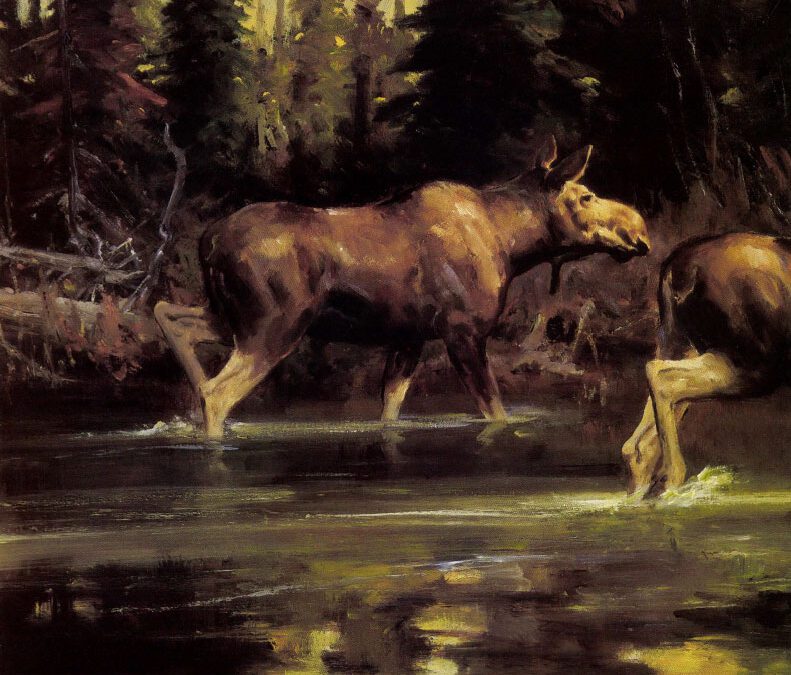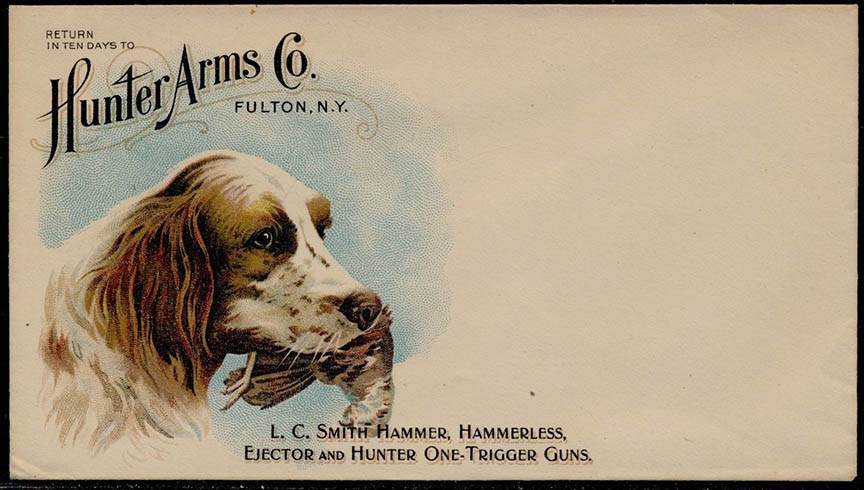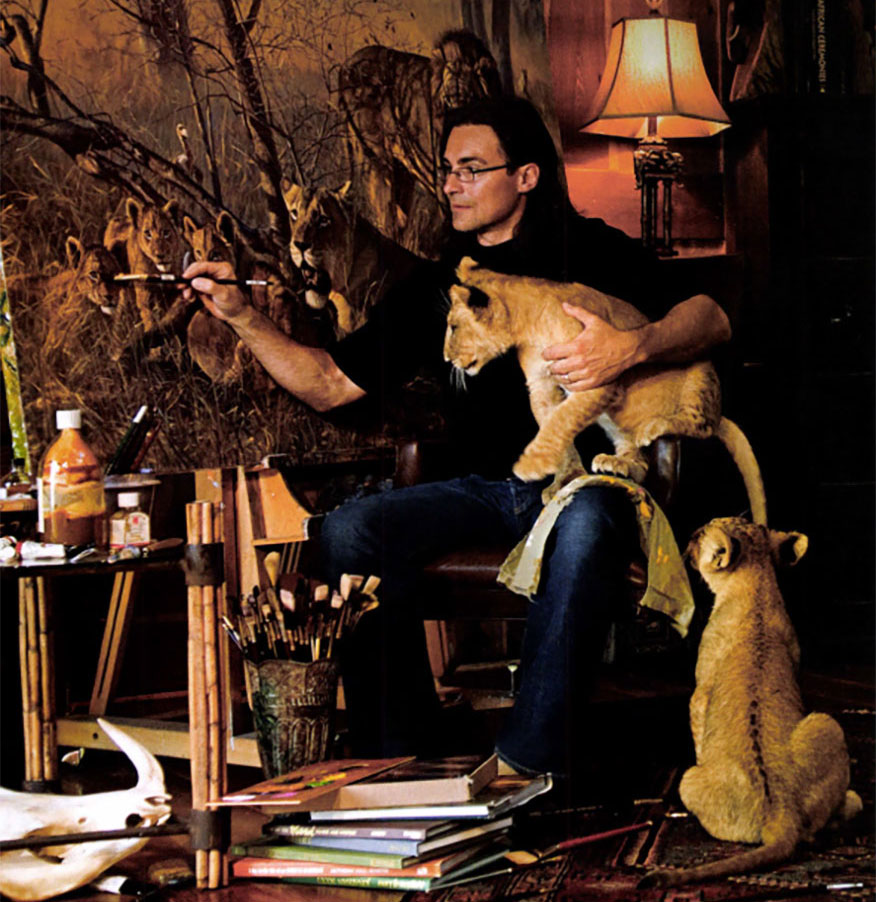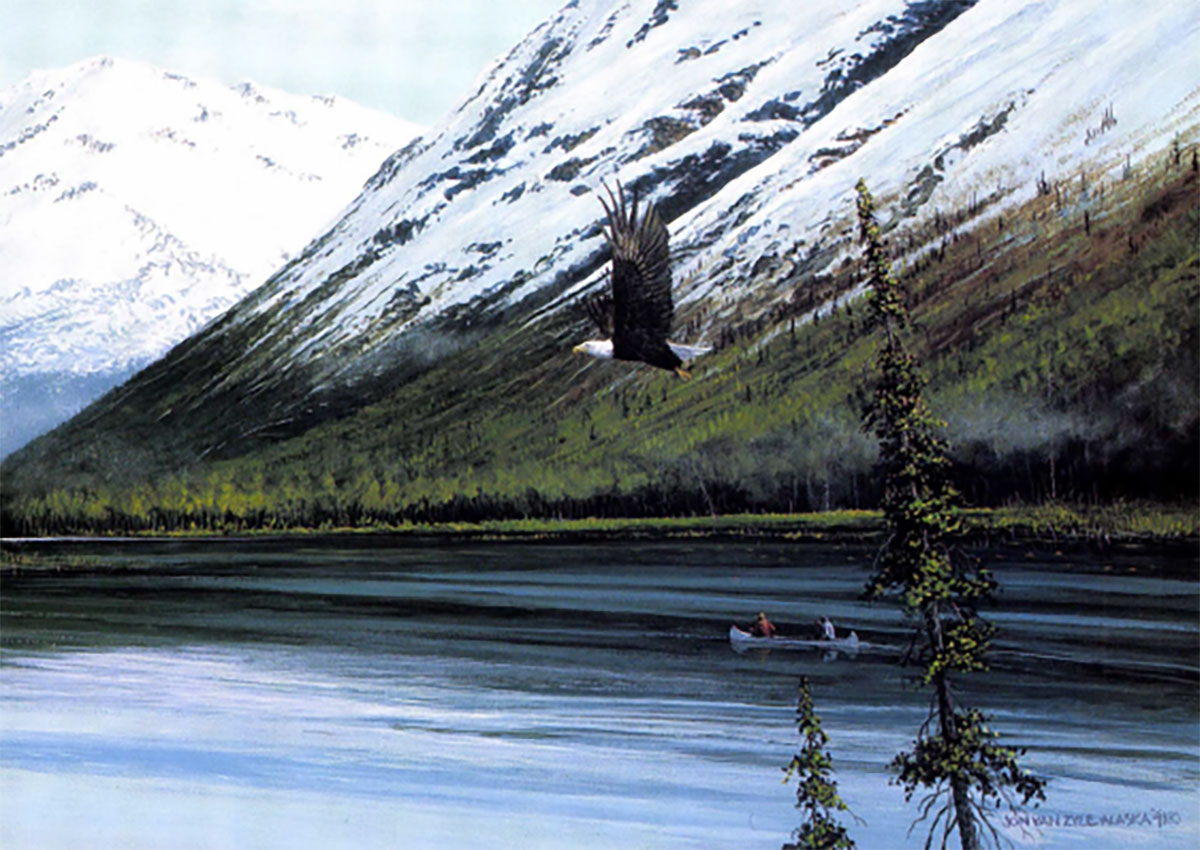Commissioning original artwork can be a dream come true … or a nightmare. A renowned sporting artist discusses the pros and cons, for painter and collector alike.
Can a collector order a piece of art to be conceived and executed to his own specifications, much as he might buy a customized Merkel shotgun or a Carmichael fishing rod? He certainly can. Scores of knowledgeable artists direct a large part of their energy towards satisfying a persistent demand for this personalized form of art.
The creation of art by commission, as opposed to the purchase of an existing piece found in a gallery or catalog, has a firm precedent in history. Royalty, the early church, and the wealthy — all routinely ordered specific works of paintings, sculpture, and even music and literature, the more fortunate artists being well supported by patrons in return for their output. Sporting art was traditionally a favorite of the landed gentry and traces its beginnings back to commissions by artists who were skilled in portraying animals, the human figure, and suitable hunting, gunning, and angling backgrounds.
In recent history, painters such as Landseer, Rungius, Stubbs, Kuhnert, Liljefors, Remington, Russell, Jaques, Homer, and the late Ogden Pleissner worked int his manner, to name just a few who did compelling works of sporting and wildlife scenes. Today, one might very well obtain commissioned pieces by Bob Kuhn, John Seery-Lester, Fred Stone, Kent Ullberg, and Ken Carlson … the list is much too long to publish here.
The advantages to the collector are obvious: he gets a painting or piece of sculpture by the artist of his choice that shows a specific subject done to a size and price that meets his interests. There are collectors, for instance, who favor paintings similar in subject matter: it might be waterfowl, or even a particular species, possibly by different artists. A collector may have several works by an artist and want one or two more — commissioning is a sure way to get them. Or, a number of paintings of a certain activity and/or locale is often the glue holding a series together.
The artist, in turn, works towards a sure (almost) sale, rather than awaiting a buyer in an art market mostly outside of his control; and the opportunity to schedule projects and income in any of the arts is a most inviting one.
Not all artists, however, wish to join hands with their collectors in this unique marriage, and I believe I can speak accurately for them. In varying degrees, they feel such work lessens the freedom they enjoy in being totally in charge of each painting they create. For them, the inputs necessary to personalize a painting are more restrictive than they care to deal with, regardless of the financial security offered.
Likewise, I imagine experienced collectors suffer a comparable and valid misgiving; probably stemming from missed deadlines, less than pleasing likenesses, and work showing unfamiliarity with the sport. Looking in from their perspective, I would guess that concepts or designs ‘they didn’t expect’ would be another serious complaint.
A knighted Scottish gentleman who hosted me at his estate and who had, over the years, entertained several artists while they executed commissioned work, proclaimed: “They could sure bloody well drink a lot!”
Sculptor Kent Ullberg told me that, by the very nature of the beast (large civic sculpture projects), much of his work is commissioned. Heroic and monumental works are usually handled by civic art committees with all the dangers of “decision by committee.” He much prefers to work with a single client,” … who is already familiar with my work, and the resulting two-way trust can be mutually advantageous.”
But it is an Oklahoma oil man’s remark which cuts through a wealth of confusion: “Bob you don’t tell me where to dig the well, and I won’t tell you where to put the dog!”
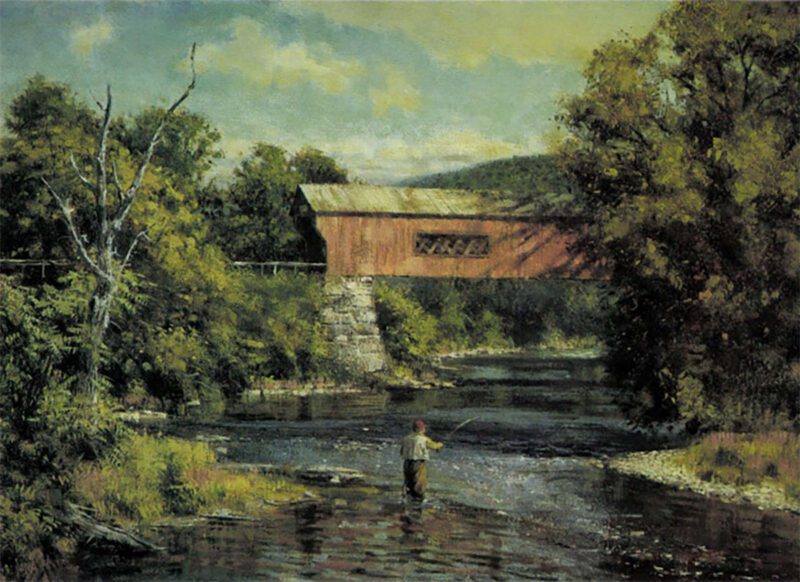
Indian Paint Brushes by Bob Abbett. The 20 x 30 oil painting was commissioned by Richard F Trismen, a collector from Winter Park, Florida.
Personally, I can see as many reasons to do commissions as not to. In my bailiwick, if a hunter is to have a well-painted portrait of his favorite bird dog, there is obviously little chance of his getting it any other way. And the same holds for portraiture of any kind, including likenesses of the sportsmen — and sportswomen— as well as the specific appearance of their favorite quail cover or trout stream.
Although I’ve found it necessary to curtail temporarily such work, a commission to paint a sharp-looking pointing dog and a hard-flying covey of quail will always stimulate my creative juices, and get me out of the house and back into the field as well. And seeing new places never fails to spin off additional and worthwhile picture ideas.
So what are the mechanics of commissioning art? A prospective buyer can approach an artist directly or through an intermediary such as a gallery or artist representative and outline the project he has in mind. All phases of the work ought to be discussed: subject matter, size, price, research and travel arrangements, and certainly a payment and delivery schedule. The buyer can expect that such work may be more expensive than when buying a similar work from a gallery wall, the difference being the added effort and research inherent in a customized painting.
Even so, one finds a wide range of laundry lists: one client may be content to request nothing more specific than a painting of a bull elephant or a certain species of waterfowl, leaving the rest of the conception up to the artist. But another collector might ask the artist to depict a certain time of day, a particular point in the action as well as the men, hunting dogs, and birds and cover to be featured.
Bob Kuhn’s bracket of ball-park commission prices range from$4,000 for a 9 x 12-inch painting to $25,000 for an imposing 30 x48-inch work. John Seery-Lester receives anywhere from $15,000 to $50,000 and Ken Carlson from$3 ,200 to $25,000. My own commissions range between$12,000 and $25,000. Please realize, however, that a painting’s price may vary substantially around these figures owing to the individual nature of the job.
As with any mutual commitment, the more details are examined, the fewer unpleasant surprises will arise later. Letters outlining all intentions are better than phone calls which either party might misinterpret. And I’ve found the simplest of sketches, color or black-and-white roughs, and/or progressive color photos, will keep both parties in closer communication and the client better advised of the artist’s direction. In a large effort which might include several paintings or sculptures projected over several years, a formal contract may be advisable along with the help of both parties’ attorneys.
It is my practice to visit clients personally, work with them and their dogs or photograph them fishing their favorite trout streams, and plug myself into their activity style as much as possible. Then and only then can I infuse my work with a “presence” specific to those people, animals, and places.
Dog portraits and hunting scenes which show the hunters, dogs, and flushing birds have been the most popular subjects in my commission experience. But I’ve also satisfied a wide spectrum of other requests including people portraits, animal and wildlife studies, fishing scenes, and even a gleaming Lear jet (yes, owned by an oil man in Oklahoma).
I enjoy commissioned work to the degree that it merges with other considerations. It is sometimes too easy to stay inside and work, and to forget that it was both the out-of-doors and a commissioned setter painting that started this whole thing for me. It is my problem, then, to balance these commitments against the time needed for study and experimentation, or for just running my own dog in the field. The current book on my work, published in the Masters of the Wild series, contains no less than30 reproductions of commissions.
Artists by nature probably tend to avoid commitment and instructions, cherishing their freedom of expression while playing it against economic realities. Artists’ greatest fantasy is that it is their interpretation which is so highly valued, transcending subject matters completely and leaving them free to paint anything they wish. While a few have reached this zenith (Picasso comes to mind), most of us never will.
But I have mostly only good thoughts of my own experiences from commissions. As you might guess, owing to the subject matter of my choice, I have had the pleasure of visiting some of the most coveted shooting and fishing locations in the world; working with owners, guides, and animals of similar stature, and just plain having a whale of a good time!
I’ve been fortunate to have met and worked with many sportsmen who have been as understanding of my needs as they have of their own; and whose generosity and support have contributed as much to my art as I have hopefully to their art collections. Many are people with whom lasting friendships have resulted and with whom I’ll always relish sharing a chilly morning and a good pointing dog.
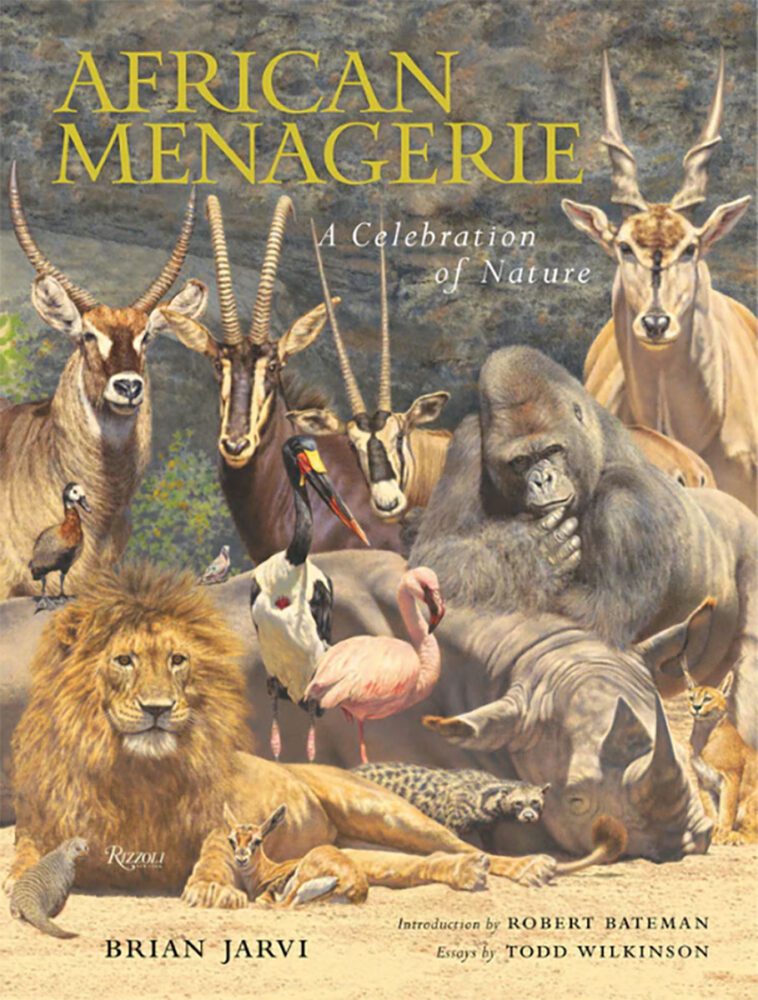 Depicting more than 220 African species, the stunning large-scale mural African Menagerie is artist Brian Jarvi’s masterwork. Lavishly reproduced in an oversize format with a gatefold, this book brings this landscape masterpiece to the conservationist, lover of Africa, and fan of wildlife art. In oversized color reproductions, the book African Menagerie offers readers a look at the finer details of the realist renderings of the animals and birds across the seven panels and thirty feet. There are also reproductions of the animal studies Jarvi created in the seventeen years leading up to the final work. Buy Now
Depicting more than 220 African species, the stunning large-scale mural African Menagerie is artist Brian Jarvi’s masterwork. Lavishly reproduced in an oversize format with a gatefold, this book brings this landscape masterpiece to the conservationist, lover of Africa, and fan of wildlife art. In oversized color reproductions, the book African Menagerie offers readers a look at the finer details of the realist renderings of the animals and birds across the seven panels and thirty feet. There are also reproductions of the animal studies Jarvi created in the seventeen years leading up to the final work. Buy Now
